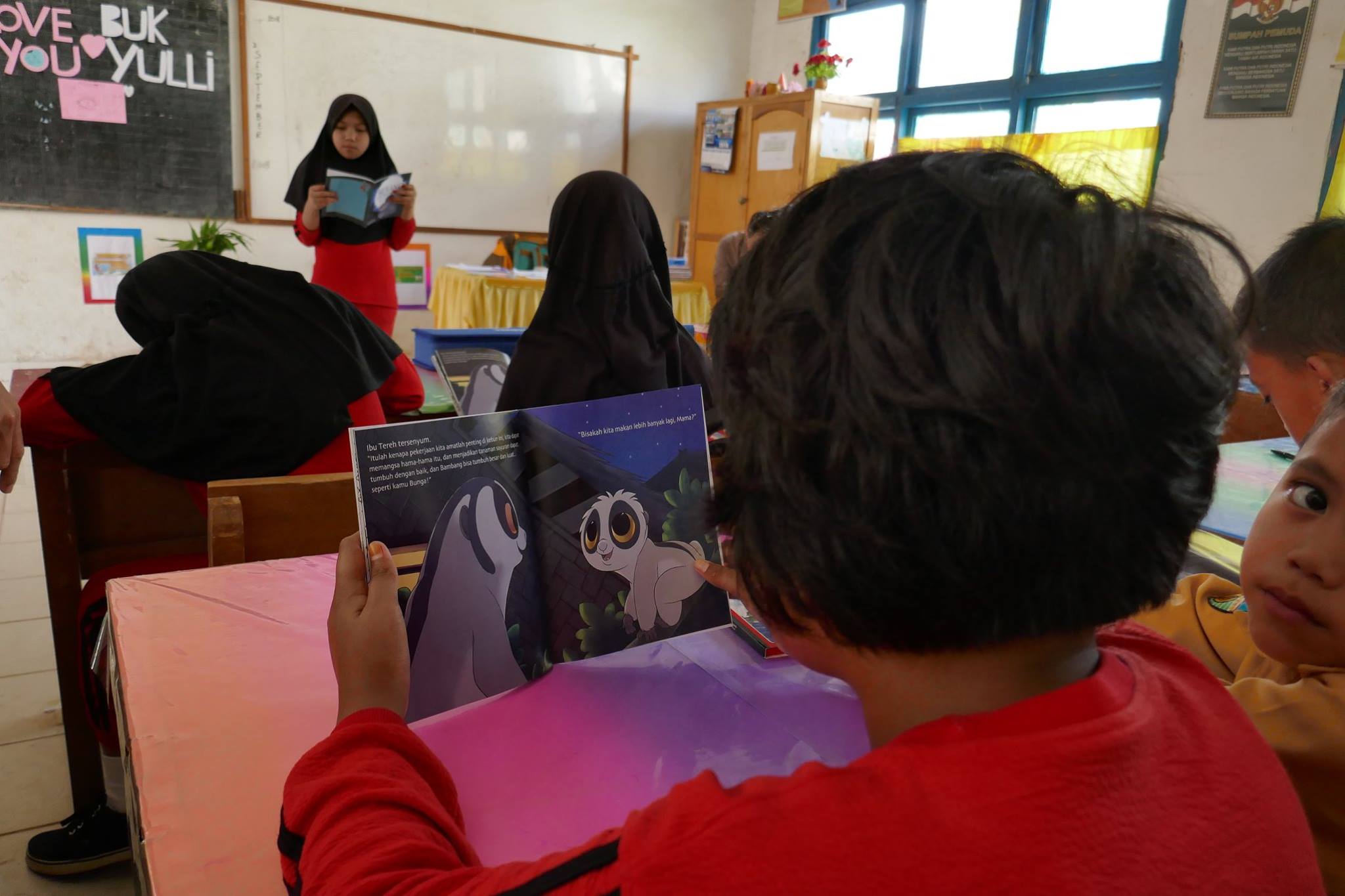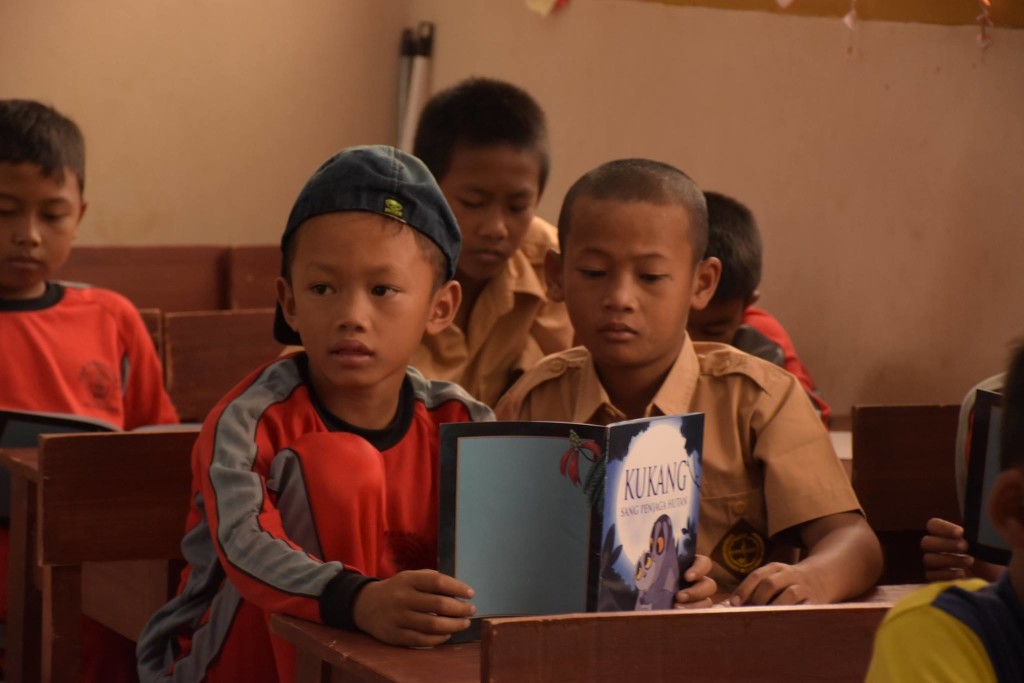Through this fun and interactive education programme, the data are collected in an entertaining and educational method that encourages children to be creative and use their imaginations. During the initial data collection and again during the final, the following activities are performed:
Drawings:
Children are given paper and coloured pencils and asked to draw a picture of a loris. We then draw data from the presence and absence of common loris ecology items (trees, water, flowers, insects, etc.) as well as « undesirable items » (cages, guns, human environments, etc.).
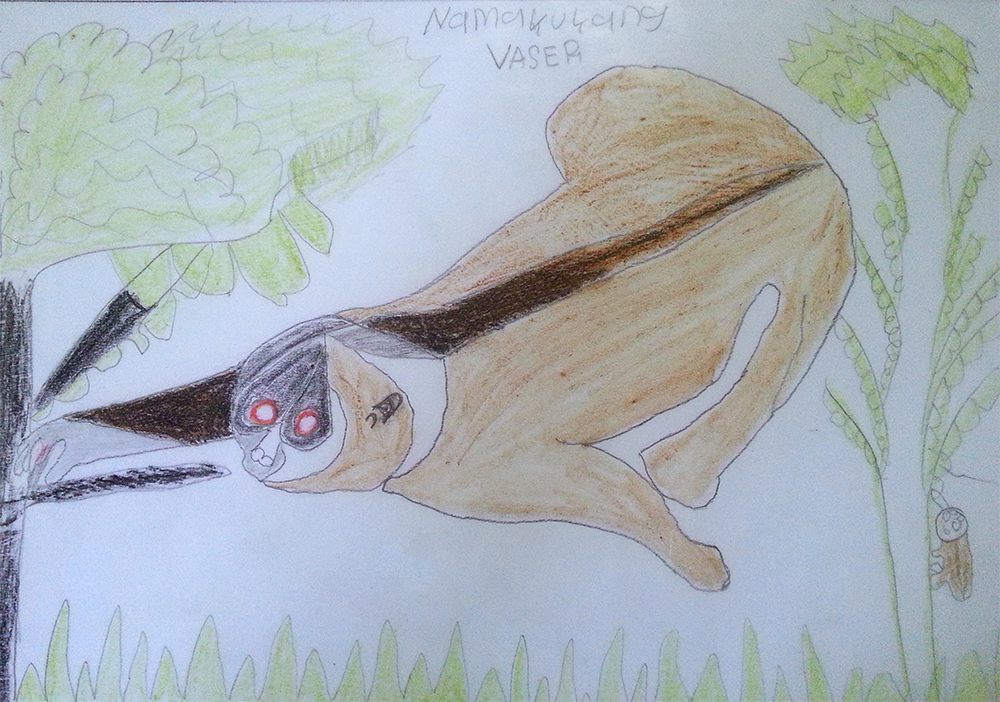
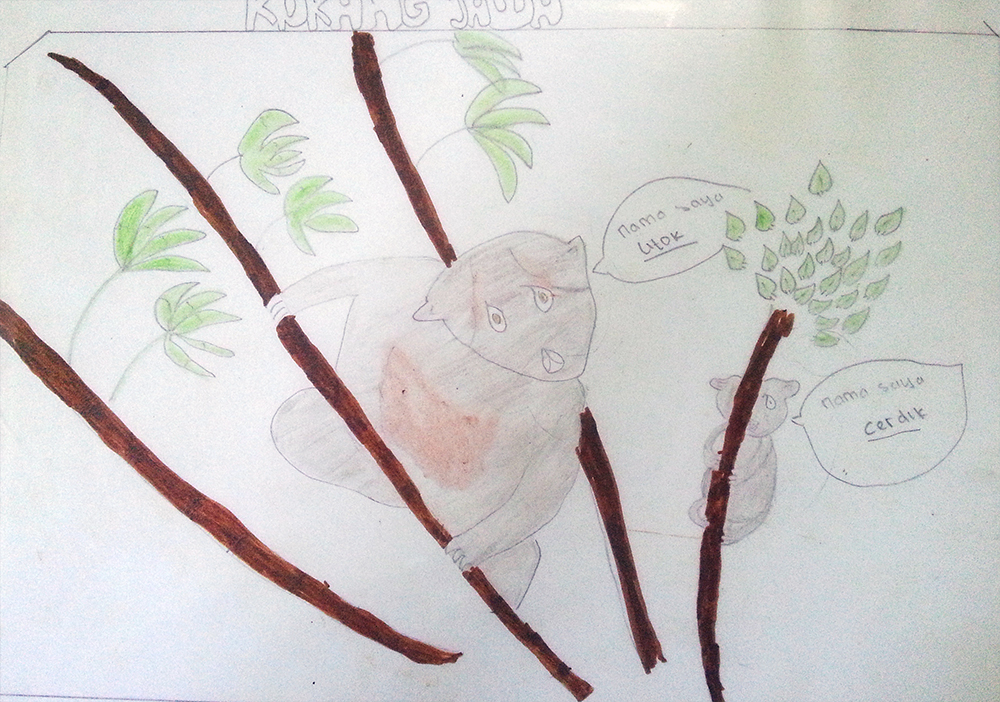
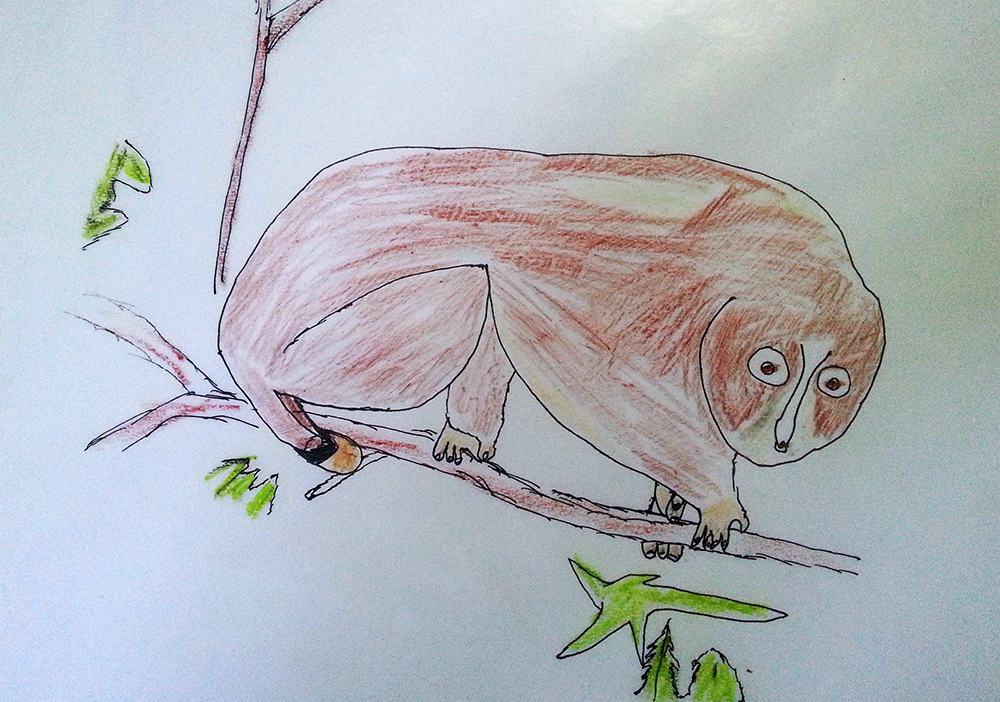
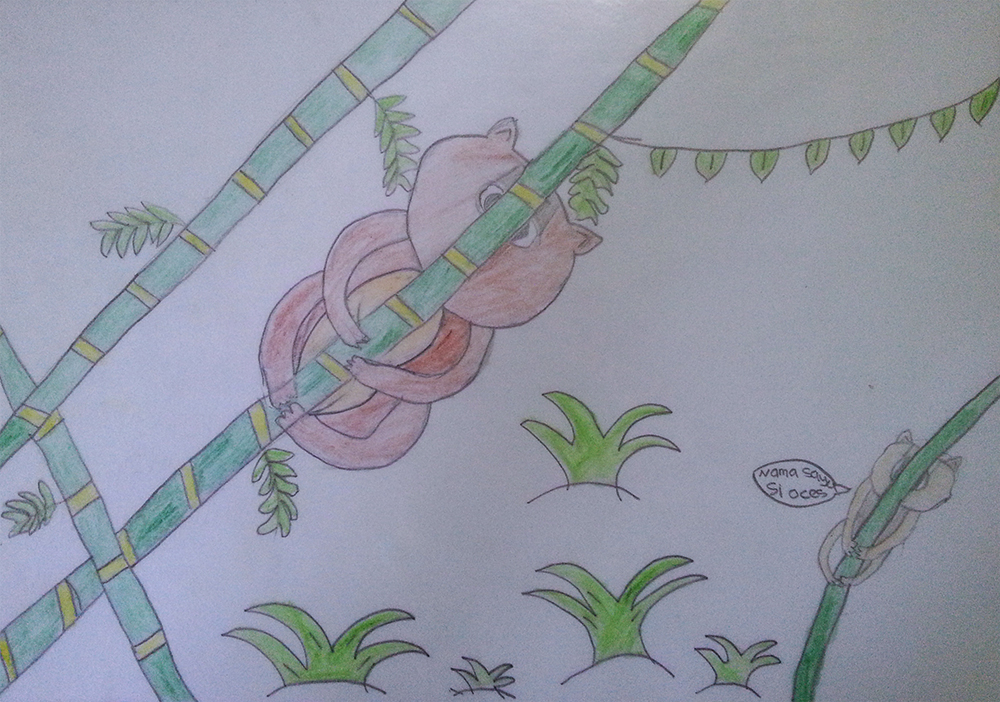
Stories:
Children are asked to write a short story about a loris. From simple facts such as « lorises are nocturnal primates that live in the forest and eat flowers » to tall tales involving adventures and multiple characters!
Engagement Data:
Throughout all sessions, data is taken on how engaged each child is in various activites and that data is used to improve our work across all of our education programmes.
Education Programme:
After the drawings and stories have been collected, our team of teachers provides an hour long lesson on loris ecology and conservation issues using song, dance, stories and games.
Slow Loris Forest Protector Book:
At the end of each visit, every child is given a copy of our very own “Slow Loris Forest Protector” childrens book as a gift (in its original Bahasa Indonesian) as well as a set of match-game cards with terms and characters from the book on them. The children are encouraged to take the books and games home, read them, share them, and spread the loris love!
“Slow Loris Forest Protector” was written by our Director Professor Anna Nekaris and illustrated by the very talented Shelley Low. The book follows Bunga the Javan slow loris and his mother Tereh through their nightly adventures, highlighting their ecology as well as their important roles as natural pest control in agricultural fields and pollinators! The story of Bunga and Tereh brings home the message of the slow loris as a true forest protector to children.
Buy a copy in English here!
Read the assessment of this work in the journal Conservation Biology!

